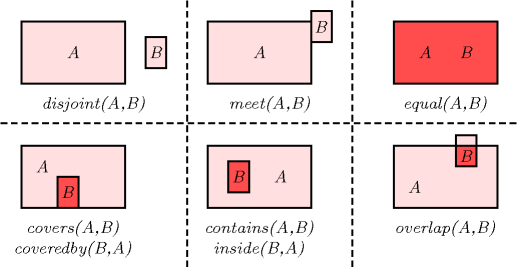3.7.204. RCC8
Region Connection Calculus (i.e., RCC-8) [RandellCuiCohn92] provides eight topological relations (i.e., disjoint, meet, overlap, equal, covers, coveredby, contains, inside) between two fixed objects such that any two fixed objects are in one and exactly one of these topological relations. Figure 3.7.54 illustrates the meaning of each topological relation.
Figure 3.7.54. The eight topological relations of RCC-8 (non-overlapping parts of rectangles A and B are coloured in pink, while overlapping parts are coloured in red)
